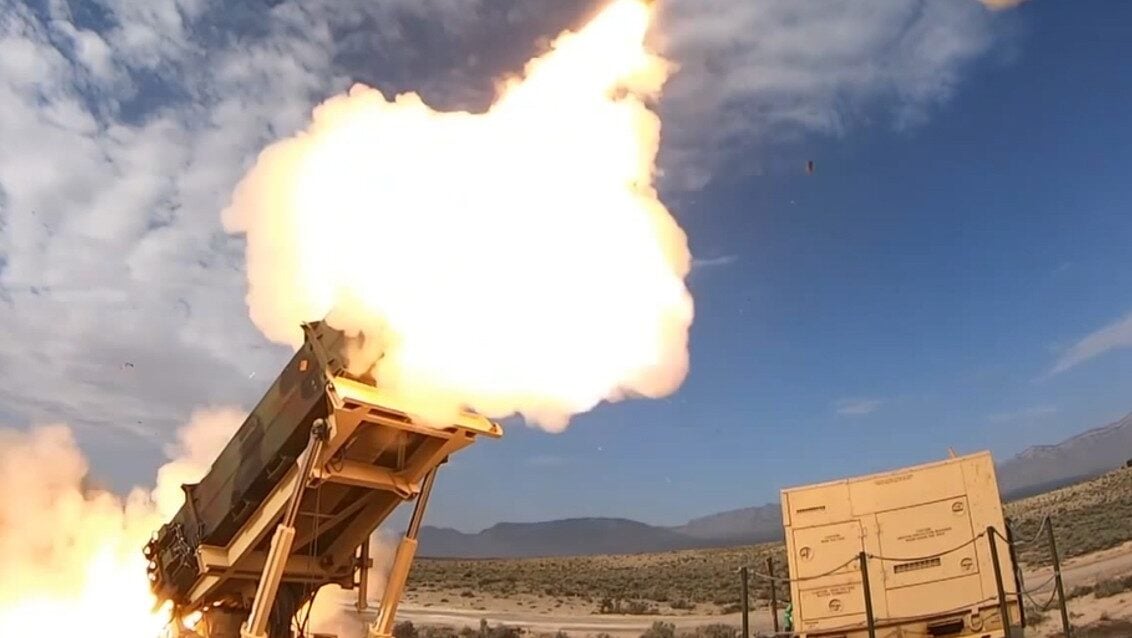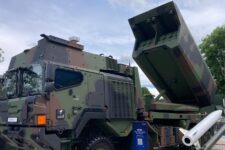
A PAC-3 missile is launched during a 2021 Integrated Battle Command System (IBCS) flight test at White Sands Missile Range. (Darrell Ames/ US Army)
GLOBAL FORCE 2024 —When the White House delivered its fiscal 2024 spending request to lawmakers, it included dollars for the services to pursue several multi-year procurement contacts for munitions lines, including for the Army’s Guided Multiple Launch Rocket System (GMLRS) and Patriot Advanced Capability-3 (PAC-3) Missile Segment Enhancement. And with the FY24 budget finally settled, the Army is ready to move out, according to its head of acquisition Doug Bush.
“We structured both the GMLRS contract, and the PAC-3 contract to be able to convert them from one-year contracts [into] multi years. We didn’t want to delay awarding the PAC-3, for example,” Bush told reporters March 26.
“This kind of two-step process, this has never been done before, actually,” he added. “But it made the most sense, because we didn’t know when we would get that authority from Congress.”
Bush didn’t specify if an existing contract will be modified into a multi-year deal or if there will be a new one-year contract coming out that will later be modified to cover multiple years of buys. If its the former, one potential contract vehicle would be the $2.4 billion deal to produce PAC-3 missiles the Army awarded Lockheed Martin in April 2023.
The spending bill includes $886 million for GMLRS procurement and funnels $31 million for advance procurement, while the Patriot line includes $961 million for PAC-3 Missile Segment Enhancement (MSE) buys, $252 million for PAC-3 MSE advanced procurement and $212 million for PAC-3 modification.
“The agreement supports greater use of multi-year procurement contracts for critical munitions to increase the Department of Defense’s stocks of such munitions, improve warfighting readiness, stabilize the defense supply base with predictable production opportunities, and increase defense industrial capacity,” lawmakers wrote in the compromise bill.
Several Air Force and Navy munition lines — the Advanced Medium Range Air-to-Air Missile, Naval Strike Missile, Long Range Anti-Ship Missile, and Joint Air-to-Surface Standoff Missile — also received green lights and dollars to move ahead with similar multi-year contracts this year. Those services did not respond to Breaking Defense’s questions about their respective execution paths.
Such multi-year contracts are traditionally reserved for larger ship and aircraft programs, but the ongoing war inside Ukraine, and now Gaza, highlighted a need to shore up US munition stockpiles and associated production lines. Those lessons helped orchestrate a provision in the FY23 defense authorization bill to provide the Pentagon with new authorities to ink such deals for a slew of programs including GMLRS and PAC-3. However, for any deal above the $500 million threshold, congressional appropriators must first sign off.
In addition to providing the services with the flexibility and dollars to go after such deals, lawmakers also provided the Army with $961 million for Mid-Range Capability (MRC) missile procurement this year, and an additional $252 million for MRC advance procurement.
Also known as Typhon, the service designed the land-based system to launch Raytheon’s existing SM-6 missiles and Tomahawk cruise missiles to hit targets between the Precision Strike Missile’s (PrSM’s) planned 500-kilometer range and the 2,776-kilometer reach of the future Long-Range Hypersonic Weapon (LRHW).
The service plans to deploy that new weapon to the Indo-Pacific region this year but needed those FY24 funds to buy more missiles to have on hand.
“We have one [MRC battery] that equipment and [the] initial quantities of missiles are already available, but… in order to be fully ready, we need to be able to get the munitions depth, and that’s where we need to buy the additional quantities of both SM-6 and Tomahawk that were actually funded… in the ‘24 submission,” Army Undersecretary Gabe Camarillo told reporters on March 11.
Michael Marrow and Justin Katz contributed to this report.






















